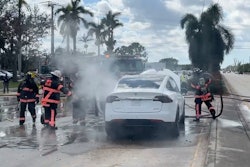The chicken and egg analogy to describe grid preparedness versus zero-emission truck availability has grown irrelevant. It is an overly simplistic characterization of a very complex interaction of forces.
Customers create demand by ordering commercial zero-emission vehicles (ZEVs). The security provided by those orders creates real demand for infrastructure to support deploying those ZEVs. Utilities use real demand to convince public utility commissions to invest capital in new generation and distribution capacity.
Where infrastructure demand exceeds capacity there is greater urgency to invest in infrastructure. Utilities are not set up to have significant idle, unused assets, neither grid transmission nor power generation. Commercial and public users may complain when peak conditions force brownouts or blackouts but, quite frankly, we are our own worst enemy as we do not incentivize utilities to have spare capacity. We focus on the low cost of electricity.
Demand pulls infrastructure investment. Very rarely do we approve of having excess capacity sitting idle waiting for emergencies. We prefer to complain and blame during and after an emergency that the infrastructure was not better prepared. It’s like having a rainy-day fund that we never adequately fund for that inevitable rainy day.
Call it a demand-response paradigm. Response almost always lags demand. I believe this explains why powerhouse states like California and Texas have operated on the dangerous fringe of electric utility capacity in recent years. Infrastructure investment has lagged demand growth in spite of multiple quality demand growth projections.
Today we are standing on the beach obviously watching the tide rushing out – surprised fish flopping in the sand, a clear sign of a coming tsunami and, as a society, and as an industry, we are waiting for that tsunami before investing in infrastructure. We seem to rationalize spending for catastrophe recovery, but not the less expensive proactive resiliency investment.
Commercial ZEVs are coming. This year OEMs are starting to ramp up production from ones and twos to 50 to 100 vehicles a quarter. Soon it will be thousands. In the 2035 to 2045 timeframe, the majority of diesel truck production will be replaced by ZEVs.










